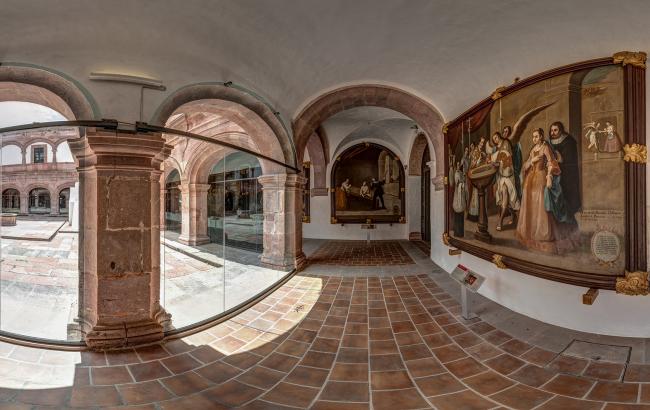
Cloister of Saint Francis
Sala
The word cloister comes from the Latin claustrum, meaning a space open to the sky and closed to the world. This cloister was dedicated to Saint Francis of Assisi, founder of the Franciscan Order, and was built between 1750 and 1775. At its center is a courtyard and a cistern completed in 1881.
It contains 26 oil paintings on canvas created specifically for this space, depicting key moments in the life of Saint Francis. These works were valuable pedagogical tools for the daily instruction of those living at the Colegio de Propaganda Fide in Guadalupe, Zacatecas. This series is of great significance: though similar collections existed in other New Spanish convents, this is the only one preserved in full and in its original location. Each painting includes explanatory verses and the name of the benefactor who funded its creation. The artist portrays Saint Francis not only as the founder of a religious family but also as a model for men and women of his time. The images depict biographical episodes and miracles attributed to him.
The iconography of the cloister carries an allegorical message encouraging the imitation of Christ. Each canvas reflects the Baroque spirit of the time, with open compositions that convey movement and draw the viewer into the scenes, turning them into witnesses to the saint’s life and deeds.
Together, these paintings form a rich tapestry of Franciscan existential scenes, expressing the founder’s ideals: emulating Christ and the apostles through a life of individual perfection and poverty, combined with a broad popular mission to save souls—both faithful and non-believers—while maintaining strict obedience to the Catholic Church.


